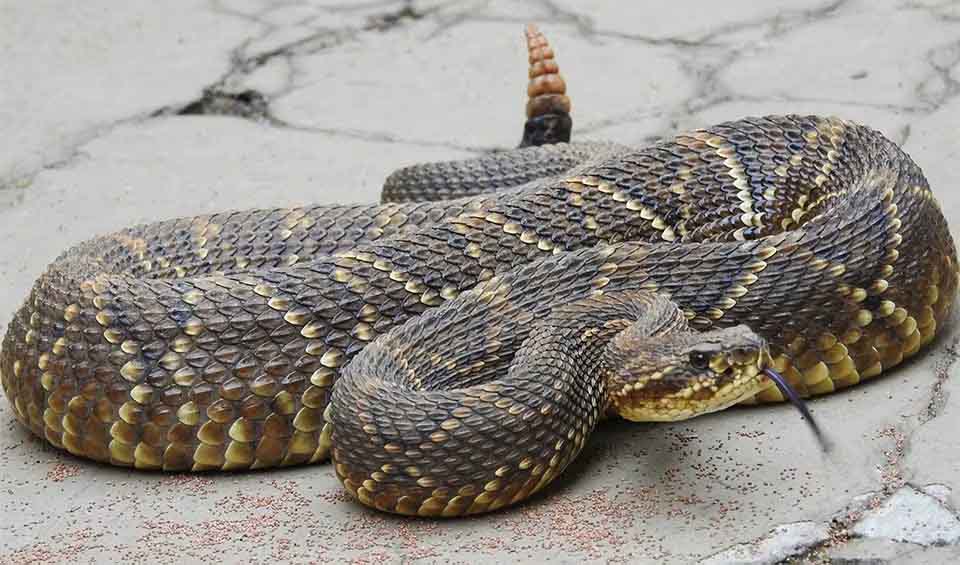Crotalus – Rattlesnakes
Known for producing buzzing rattling sounds with their tails
These snakes are easily recognizable by the distinctive sound-making rattle at the end of their tails. This rattle is made up of interlocked segments of keratin, the same material that makes up human hair and nails, and when vibrated, it produces a buzzing sound that is a warning to potential threats to stay away.
These snakes are quite the adventurers and are not picky about where they live. They can make their homes in rocky hills, peaceful meadows, and dense scrub brush, but they are especially famous for living in the desert sands of the Southwest. Rattlesnakes are flexible and adaptable, which means they can make the best of many different environments.
What’s really cool about rattlesnakes is how they ‘smell’ the world. They have a special organ called Jacobson’s organ, which gives them a superpower sense of smell. This isn’t like how humans smell flowers or dinner cooking; rattlesnakes use their forked tongues to pick up scents from the air or ground, then touch their tongue to the Jacobson’s organ to ‘taste’ the smells. This helps them find their dinner, like rodents and other small animals, and know when there might be danger nearby so they can hide.
It’s a common misunderstanding to think snakes smell with their tongues because we see them flicking their tongues in and out. But really, the tongue is just the messenger bringing information to the special smell organ in the roof of their mouth.
Species in this genus
Black-tailed rattlesnake
While still venomous and dangerous if provoked, they are considered less aggressive than some of their rattlesnake cousins
Eastern diamondback rattlesnake
Largest of the 32 currently recognized rattlesnake species native to the US
Midget faded rattlesnake
One of the smallest species of rattlesnakes in North America, hence the name “midget”
South American rattlesnake
Both feared and respected, often appearing in traditional stories and as a symbol of danger and power
Southwestern speckled rattlesnake
You see, its skin can be all sorts of colors, like pink, brown, gray, or even yellow!
Timber rattlesnake
One of North America’s most formidable snakes, known for its long fangs and potent venom
Western diamondback rattlesnake
Named for the diamond-shaped patterns found across the back of their body








